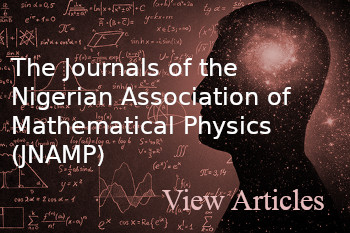A DISCRETE TIME ECONOMIC ORDER QUANTITY MODEL FOR AMELIORATING ITEMS WITH CONSTANT DEMAND
DOI:
https://doi.org/10.60787/tnamp-19-257-266Keywords:
EOQ, Amelioration, Constant Demand, Discrete timeAbstract
In this paper, we develop a discrete time Economic Order Quantity (EOQ) Model with constant demand for items that are ameliorating. In the model, the items considered are assumed to ameliorate immediately they arrive in stock. The purpose is to determine the optimal ordering quantity and replenishment cycle so as to minimize the total variable cost. It is the remodelling of Gwanda by considering time to be discrete. The model is developed using difference equation with initial and boundary conditions. Numerical examples are illustrated to see the application of the model and sensitivity analysis carried out to determine the effect of the parameter changes.
Downloads
References
Hwang, H. S. (1997). A Study on an Inventory Model for Items with Weibull Amelioration. Computers and industrial engineering. 33, 3-4.
Hwang, H. S. (1999). Inventory Models for both Ameliorating and Deteriorating Items. Computers and industrial engineering. 37, 257-260.
Biswajit, M., Asoke, K. B. and Manoranjan, M. (2003). An Inventory System of Ameliorating Items for Price Dependent Demand Rate. Computers and industrial engineering. 45, 443-456.
Hwang, H. S. (2004). A Stochastic Set-Covering Location Model for both Ameliorating and Deteriorating Items. Computers and industrial engineering. 46, 313-319.
Moon, I., Giri, B. C. and Ko, B. (2005). Economic Order Quantity Models for Ameliorating and Deteriorating Items Under Inflation and Time Discounting. European Journal of Operation Research.162, 773-785.
Srichandan, M, Misra, U. K.,Minakshi, M. and Barik, S. (2012). An Inventory Model with Weibull Amelioration Under the Influence of Inflation and Time Value for Money. Journal of Computer and Mathematical Science. 3, 167-176.
Gobinda, C. P., Satyajit, S. and Pravat, K. S. (2013). A Note on Inventory Model for Ameliorating Items with Time Dependent Second Order Demand Rate. Scientific Journal of Logistics.9, 43-49.
Han-Wen, T., Shu-Cheng, L. and Peterson, J. (2017). Improvement for Amelioration Inventory Model with Weibull Distribution. Mathematical Problems in Engineering .2017, 8946547-894555.
Gwanda, I.Y. (2018). Economic order quantity model for ameliorating items with time dependent demand and linear time dependent holding cost. Global Scientific Journals.6 (12), 126-145.
Yahaya, A., Dayyabu, H. and Kabiru, M.A. (2019). Ordering policy for ameliorating inventory with linear demand rate and unconstrained retailer’s capital. Abacus (Mathematical Science Series).44 (1), 346-351.
Moon, I. Giri, B. C. and Ko, B. (2006). Economic order quantity model of ameliorating and deteriorating items with zero ending inventory for fixed order interval over a finite time horizon. European Journal of Operations Research,174 (2). 1345-1349.
Law, S. T. and Wee, H. M. (2006). An Integrated Production-Inventory Model for Ameliorating and Deteriorating Items Taking Account of Time Discounting. Mathematical and Computer Modelling. 43, 673-685.
Valliathal, M. and Uthayakumar, R. (2010). The Production Inventory Problem for Ameliorating and Deteriorating Items with Non-Linear Shortage Cost Under Inflation and Time Discounting. Applied Mathematical Sciences.4, 289-304.
Valliathal, M. and Uthayakumar, R. (2013). An inventory model on inflation effects for weibulldeteriorating and ameliorating items with ramp-type of demand and shortages. Journal of operation reseach 3, 441-455.
Gothi, U. B. and Parmar, K. C. (2016). An Integrated Inventory Model with Exponential Ameliorating and Two Parameter Weibull Deterioration. Journal of Statistics and Mathematical Engineering. 2(2).
Gothi, U. B. and Bhojak, A. (2016). Inventory Model for Ameliorating and Deteriorating Items Under Time Dependent Demand with Partial Backlogging. International Journal of Engineering Science and Computing. 6 (4), 3979-3985.
Vandana and Srivastava, H. M. (2016). An inventory model for Ameliorating and Deteriorating Items with Trapezoidal Demand and Complete Backlogging Under Inflation and Time Discounting Mathematical Methods in the Applied Sciences.DOI: 10.1002/mma.4214.
Karthikeyan, K. and Santhi, G. (2017). EOQ Model for Weibull Ameliorating Items with Constant Deteriorating Items, Time Dependent Demand Rate and Price Discount on Backorders. International Journal of Pure and Applied Mathematics.117, 63-69.
Gwanda, I.Y. (2019). An economic order quantity model for both ameliorating and deteriorating items with exponentially deteriorating increasing demand and linear time dependent holding cost. Global Scientific Journals.7 (1), 427-443.
Dave, U. and Jaiswal, M. C. (1980). A discrete in time probabilistic inventory model for deteriorating items. Decision Science,11, 110-120.
Dave, U. (1985). On a discrete in time deterministic inventory model for deteriorating items with time proportional demand. Optimization.16. 449-461.
Ferhan, M. A., Alex., L. and Fahriye, U. (2013). Inventory models for deteriorating items on non-periodic discrete time domains, European Journal of Operational research,230, 284-289.
Aliyu, M. D. S. and Boukas, E. k. (1998). Discrete time inventory models with deteriorating items International journal of Systems Science,29 (9), 1007-1014.
Zhaotong, L. and Liming, L. (1999). A discrete time model for perishable inventory systems, Annals of Operation Research,87,103-116.
Yakubu, M.I. and Sani, B. (2015). EOQ model for deteriorating items that exhibit delay in deterioration with discrete time. Journal of the Nigerian Association of Mathematical Physics,31, 241- 250.
Gwanda, I. Y. and Sani B (2016). An Economic Order Quantity Model for Items that are both Ameliorating and Deteriorating with Constant Demand. The Journal of Science and Technology Wudil. 1, 335-342.
Downloads
Published
Issue
Section
License
Copyright (c) 2024 The Transactions of the Nigerian Association of Mathematical Physics

This work is licensed under a Creative Commons Attribution-NonCommercial 4.0 International License.




